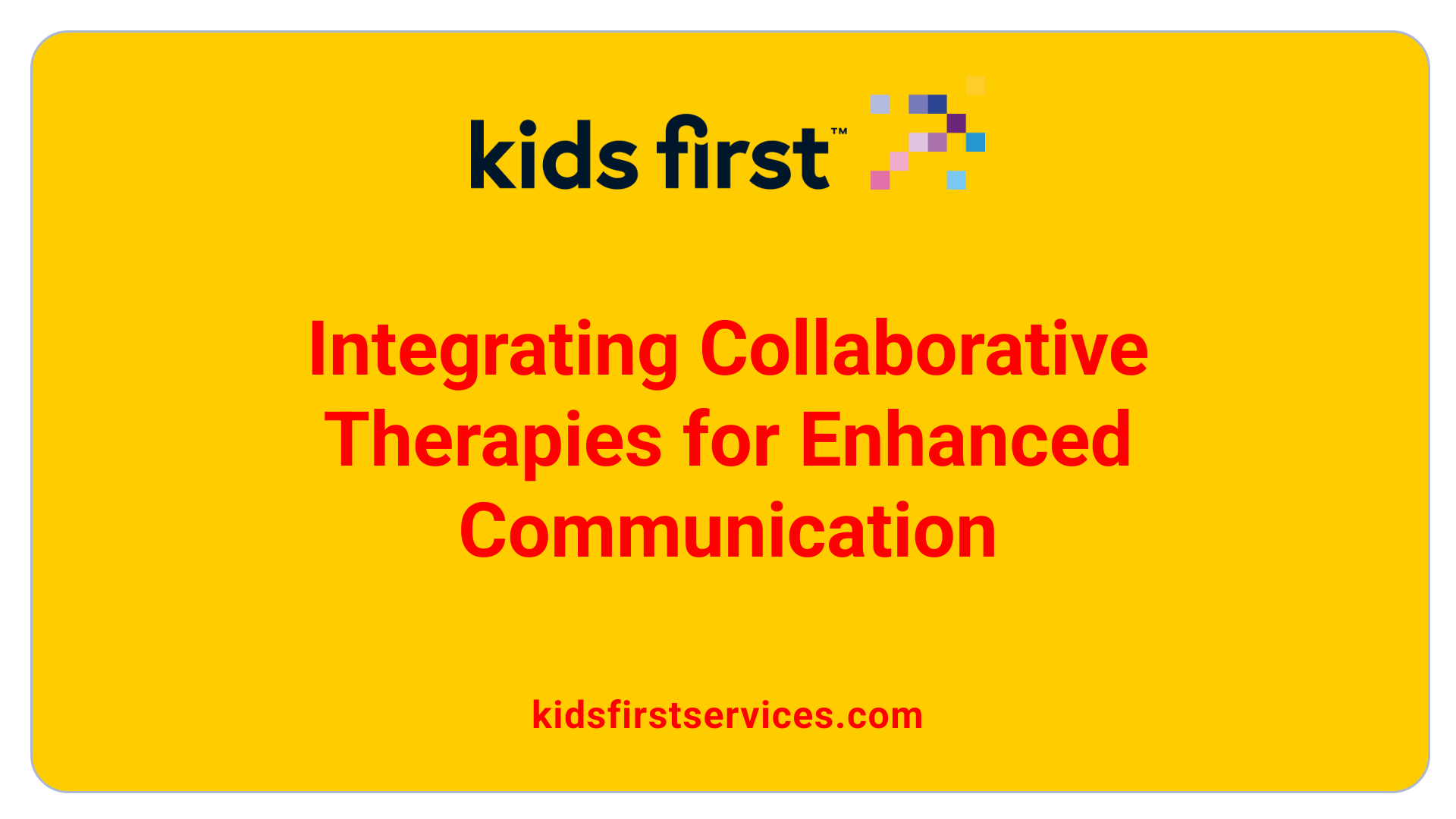
How ABA Therapy Supports Children in Developing Communication Skills
The Influence of ABA Therapy on Enhancing Child Communication
Introduction to ABA Therapy in Communication Development
Communication is a fundamental skill that underpins social and emotional development, especially for children with autism who may encounter various barriers in expressing themselves. Applied Behavior Analysis (ABA) therapy has emerged as a cornerstone of intervention strategies aimed at improving communication skills among these children. This article explores how ABA therapy supports children in developing communication skills, using structured techniques, individualized plans, and an evidence-based approach.
Understanding ABA Therapy's Role in Communication Improvement

The Role of ABA in Enhancing Communication
ABA therapy plays a significant role in improving communication skills for children, particularly those with autism. By assessing individual abilities and challenges, practitioners can develop personalized intervention plans. Techniques such as Discrete Trial Training (DTT) and Natural Environment Teaching (NET) are utilized to engage children in meaningful communication practices, enabling them to express themselves more effectively in various settings.
Use of Communication Boards and Other Devices
For children with limited verbal skills, communication boards and tools like the Picture Exchange Communication System (PECS) are invaluable. These resources empower non-verbal children to make requests and express needs through visuals. Furthermore, speech-generating devices provide alternatives to traditional speech but can be costly. Integrating methods like American Sign Language (ASL) also enhances their communication toolkit, helping bridge gaps in expression.
Importance of Positive and Negative Reinforcement
Positive reinforcement is a cornerstone of ABA therapy, motivating children to use language by rewarding successful communication attempts. On the other hand, negative reinforcement may discourage less desirable behaviors, promoting a supportive learning environment. Together, these strategies not only enhance social communication skills but also build children's confidence in interactions. This balanced approach helps children with autism navigate social situations more effectively and fosters better relationships in their daily lives.
Key Techniques in ABA Therapy for Communication Skills

What are some techniques used in ABA therapy for developing communication skills?
ABA therapy employs several effective techniques for enhancing communication skills in children, especially those with autism. One standout approach is Functional Communication Training (FCT).
Functional Communication Training offers children alternate ways to express their needs and wants. This can include using gestures, sign language, or even picture exchanges. The process begins with a functional behavior assessment to understand the underlying reasons for challenging behaviors. The ultimate goal is to replace these behaviors with appropriate communication responses.
In FCT, Motivating Operations (MOs) are critical as they influence how effective different reinforcers can be. By considering what motivates a child, therapists can tailor interventions to ensure they resonate with the child’s preferences and needs. This aspect further personalizes the learning experience, making it more engaging and effective.
By systematically teaching communication skills along with positive reinforcement methods, FCT can substantially reduce disruptive behaviors while promoting more effective communication.
Additional ABA Techniques
In addition to FCT, ABA therapy utilizes other techniques that significantly support communication development:
- Discrete Trial Training (DTT): A structured method involving clear instructions and reinforced responses.
- Incidental Teaching: Utilizes everyday interactions as teachable moments for language development.
- Modeling Techniques: Therapists demonstrate communication behaviors and phrases for children to imitate.
- Visual Supports: Tools such as picture boards help in learning vocabulary and understanding concepts.
These techniques, along with FCT, work in unison to enhance communication skills effectively.
Objectives of ABA Communication Goals

What are ABA communication goals?
ABA (Applied Behavior Analysis) communication goals are specific, structured objectives aimed at enhancing communication skills in individuals, particularly those diagnosed with Autism Spectrum Disorder (ASD). These goals focus on a variety of communication aspects, including expressive communication—how children convey their thoughts—and receptive language skills, which involve their ability to understand and process information.
SMART criteria used in setting goals
To ensure that these goals are effective and achievable, they follow the SMART criteria:
- Specific: Clearly defined to address particular communication deficits.
- Measurable: Progress can be tracked through assessments.
- Achievable: Goals are realistic and attainable by the child.
- Relevant: They are pertinent to the child’s needs and everyday life.
- Time-Bound: Set within a specific timeframe to encourage timely progress evaluations.
This strategic alignment enables caregivers, alongside Board Certified Behavior Analysts (BCBAs), to develop actionable plans, like using eye contact during requests or improving social interaction abilities. Regular assessments using various language and communication tools help monitor advancements and refine goals accordingly.
Focus on expressive and receptive language skills
In ABA therapy, a significant focus is placed on both expressive and receptive language skills. Expressive language skills relate to how children communicate their needs or thoughts, while receptive skills deal with how they understand and interpret others' words. Goals often include helping children improve their ability to follow directions, engage in conversations, and effectively use new vocabulary in context. By regularly evaluating these skills, ABA therapy aims for continuous improvement, leading to better communication outcomes and enhanced social interactions.
Principles of ABA in Language Development

How do you integrate ABA therapy principles into language development support?
Integrating ABA therapy principles into language development support involves utilizing structured strategies that promote effective communication skills. One fundamental strategy is Discrete Trial Teaching (DTT). In DTT, language skills are broken down into manageable steps. Clear instructions are provided, followed by immediate reinforcement for correct responses. This method minimizes errors and builds confidence as children practice using new vocabulary and phrases.
Another effective approach is Incidental Teaching. This technique involves creating natural opportunities for children to communicate. For instance, during playtime, a child might be encouraged to request a toy verbally, and upon doing so, receive reinforcement. This method rewards spontaneous communication, reinforcing the use of language in everyday scenarios.
Shaping is also essential in developing language skills. By rewarding small, incremental successes, children learn to use more complex language behaviors over time. Each success, no matter how minor, is recognized and builds towards the child's overall communication goals.
It's crucial to ensure these methods are culturally and linguistically relevant. Tailoring interventions to fit the specific backgrounds and experiences of families makes ABA techniques more effective. By incorporating these principles, we can significantly enhance language development in children with diverse communication needs.
Benefits of ABA Therapy in Communication Progress
Enhanced Social Interactions
ABA therapy significantly improves social interactions for children with autism. Through structured play and group activities, children learn vital social skills such as taking turns, sharing, and responding appropriately to social cues. This environment encourages them to practice communication in real-world settings, thereby boosting their confidence when interacting with peers and adults alike.
Reduced Challenging Behaviors
By enhancing communication skills, ABA therapy often leads to reduced challenging behaviors. As children become more capable of expressing their needs and emotions, frustration levels diminish. Improved communication allows them to articulate their feelings instead of resorting to problematic behaviors when unable to convey their thoughts.
Benefits for Everyday Communication
ABA therapy promotes vital communication abilities essential for daily interactions. It utilizes techniques like positive reinforcement to encourage and reward verbal expression. The use of visual supports, such as picture boards or flashcards, helps children associate words with meanings, making language learning more engaging. Ultimately, these developments lead to better relationships with family, teachers, and the community, fostering greater independence and enhancing overall quality of life.
| Benefits | Description | Impact |
|---|---|---|
| Enhanced Social Interactions | Learning turn-taking and sharing in group settings | Increased confidence |
| Reduced Challenging Behaviors | Improved expression of needs leads to less frustration | Better emotional regulation |
| Everyday Communication Skills | Positive reinforcement and visual supports to aid language learning | Stronger relationships |
Individualized Learning Plans in ABA Therapy
Tailoring Communication Goals Based on Assessments
In Applied Behavior Analysis (ABA) therapy, the first step in nurturing a child's communication skills is to conduct thorough assessments. These evaluations help practitioners understand each child’s current abilities, strengths, and specific communication deficits. This foundational assessment informs the development of customized learning plans that cater specifically to the unique needs of the child. Each goal set during this process is designed to be achievable and is integral to enhancing communication competencies incrementally.
The individualized plans focus on particular language objectives, whether it be enhancing speech, expanding vocabulary, or improving social interactions. Strategies are tailored not only to the child's abilities but also to their learning style, ensuring that therapy is both effective and engaging.
Development of Custom Vocabulary Lists
An essential element of these individualized learning plans involves creating customized vocabulary lists. These lists ensure that the language being taught aligns with the child’s interests and daily experiences, making the learning process more engaging and relevant. For instance, if a child has a keen interest in animals, vocabulary related to animals will be emphasized, allowing them to connect their learning to their personal interests.
This method not only fosters motivation but also helps in practical language application. Coupling these lists with visual supports such as flashcards can enhance understanding and retention, significantly promoting the child's communication development.
Incorporating Visual and Technological Aids
Use of Visual Supports Like Flashcards
Visual supports, including flashcards, play a crucial role in ABA therapy by enhancing children's language acquisition. These tools help young learners connect spoken words with their meanings, thereby fostering vocabulary development.
- Picture boards facilitate communication by allowing children to select images that represent their needs or desires, promoting interactive engagement in conversations.
- Flashcards can be customized to feature vocabulary relevant to a child's interests, making learning more engaging and effective. By integrating real-life scenarios, children can practice these newly learned words in a contextual setting.
Technology-Assisted Tools
The use of technology-assisted tools in ABA therapy has gained traction due to their interactive nature. These tools often include:
- Speech-generating devices that provide children with the means to communicate using pre-programmed phrases.
- Apps and software designed for language learning, often incorporating visuals and auditory cues to support skill development.
These technology-driven aids foster motivation and support communication in a dynamic way, making language learning accessible and enjoyable for children.
Role of Early Intervention in ABA Therapy
Importance of Early Intervention
Early intervention is vital when it comes to applying Applied Behavior Analysis (ABA) therapy for children, especially those with autism. The earlier the intervention, the more effective it tends to be. By addressing communication and social skills during critical periods of development, children can significantly benefit from tailored therapeutic approaches. These early efforts help in building essential language and socialization skills, making it easier for children to navigate their environments.
ABA's Impact During Critical Learning Periods
ABA therapy strategically targets specific communication goals aligned with developmental milestones. For instance, using techniques like discrete trial training, it breaks down complex language skills into manageable steps. Additionally, natural environment teaching emphasizes applying these skills in real-world contexts, which enhances learning. The structured reinforcement strategies of ABA not only reinforce desired communication behaviors but also address barriers to effective expression, ultimately fostering better social interactions and greater independence.
| Focus Area | ABA Therapy Approach | Outcome |
|---|---|---|
| Early Intervention Benefit | Addresses skills during critical learning stages | Improved language and social skills |
| Learning Contexts | Real-world applications via natural teaching | Enhanced everyday communication |
| Reinforcement Techniques | Positive reinforcement for desired behaviors | Encourages effective communication use |
| Tailored Goals | Individualized plans target specific language needs | Supports gradual skill development |
This structured focus on children at pivotal stages of growth helps set the foundation for successful long-term development.
Collaborative Therapies with ABA

What are speech therapy and augmentative communication methods?
Speech therapy plays a vital role in enhancing the communication skills of children with autism. It complements ABA by focusing on verbal skills and speech clarity. Augmentative and Alternative Communication (AAC) methods, such as the Picture Exchange Communication System (PECS), help non-verbal children express their needs visually. Using these tools, children can communicate before they develop verbal skills, fostering independence.
How does ABA integrate with other behavioral interventions?
ABA therapy also integrates well with various behavioral interventions, reinforcing communication skills learned in therapy. Combining ABA with social skills training helps children practice in group settings, while techniques from behavior management strategies can alleviate challenging behaviors, making it easier to focus on communication. This collaborative approach ensures that each child receives comprehensive support tailored to their unique needs, enhancing their overall development in social and communicative areas.
Conclusion
ABA therapy stands out as a structured and effective approach to developing communication skills in children, particularly those with autism and related developmental challenges. Its ability to tailor interventions based on individual assessments, its use of diverse methodologies such as positive reinforcement and visual aids, and its integration with other therapeutic approaches highlight its comprehensive nature. The benefits in communication translate to significant gains in social interactions, behavior management, and overall quality of life for these children. As awareness and understanding of ABA continue to grow, it remains a beacon of hope and progress for families seeking communication development support for their children.
References
- ABA Communication Goals and Skills - Empower Behavioral Health
- How ABA Therapy Can Support Language Development in Kids
- How ABA Therapy Can Improve Communication Skills in Children
- Benefits of ABA Therapy for Children with Autism
- Applied Behavior Analysis (ABA) | Autism Speaks
- Building Communication Skills for Kids with Autism with ABA
- Using ABA Therapy to Develop Communication Skills in Children ...
- ABA Therapy Goals: 25 Practical Examples & Timelines
- ABA Communication Goals | 35 Example Goals - i-Autism
- ABA Therapy Goals: 30 Practical Examples & Timelines




